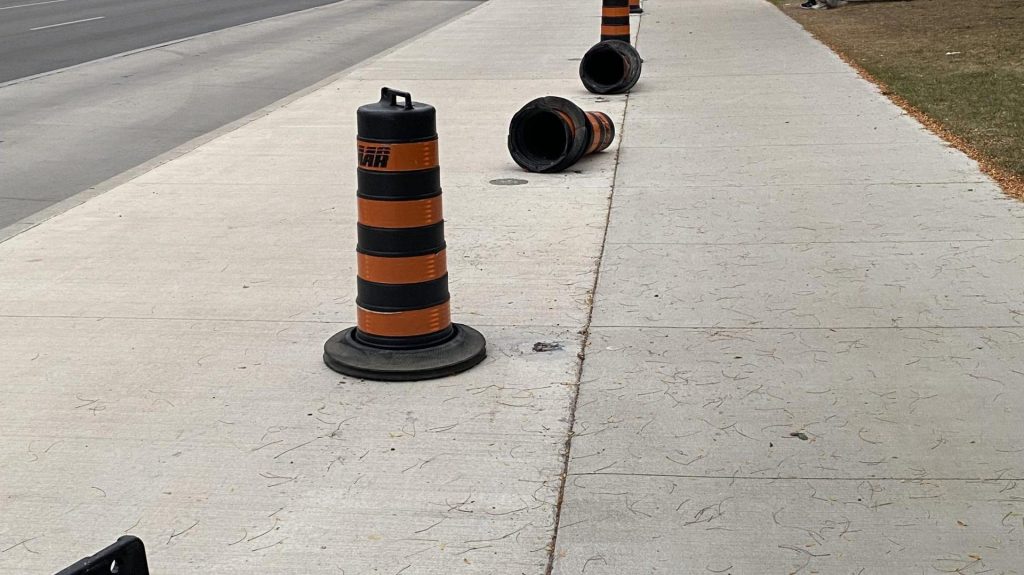You’ve probably seen them. Those bright orange traffic cones stationed at the corner of Queens Avenue and Ridout Street that have become as much a part of the London landscape as the Thames itself. What started as what most people assumed was temporary construction has now stretched into its second year, leaving locals scratching their heads and wondering what exactly these pylons are supposed to be doing.

The cones have sparked plenty of online chatter among Londoners, with many questioning their purpose and expressing frustration over their seemingly permanent residence at the intersection. Some residents report seeing the same setup for over 12 months, turning what should be a temporary traffic control measure into an urban mystery.
One popular theory making rounds among locals is that construction companies simply leave traffic cones in place as a form of free storage until they need them at the next job site. Rather than paying for warehouse space or dealing with the logistics of moving equipment back and forth, crews just park their pylons wherever the last project ended and let them sit there indefinitely.
This practice isn’t uncommon across Canada, where abandoned construction equipment has become almost legendary. In Montreal, one particular group of orange cones reportedly held their ground in the exact same spot for 16 years, becoming an unofficial landmark that showed up consistently in Google Street View images over nearly two decades.
The Queens and Ridout situation has become particularly puzzling because the cones don’t appear to be directing traffic around any active work zone, protecting pedestrians from hazards, or serving any obvious safety function. They’re just… there. Standing guard like orange sentries at one of London’s busier intersections.
Some locals have joked about the cones becoming permanent fixtures, with suggestions ranging from turning them into art installations to using them as impromptu slalom courses for skateboarders. Others have wondered whether the city has simply forgotten about them altogether — a case of bureaucratic oversight that’s left these traffic control devices in perpetual limbo.
The mystery has also raised questions about accountability and cost. If these are city-owned pylons, taxpayers might be wondering whether they’re paying daily rental fees for equipment that’s not actually being used for its intended purpose. Construction cone rental can run as high as $20 per day per cone, meaning extended deployments could add up to significant expenses over time.
What makes the situation even more intriguing is that similar setups have appeared and disappeared throughout London over the years, but the Queens and Ridout installation has shown remarkable staying power. While other construction zones wrap up and equipment gets moved along, these particular cones seem to have found their forever home.
The pylons are covering electrical junction boxes in the area, likely related to infrastructure preparations for the city’s Bus Rapid Transit system. The location is slated to eventually receive proper BRT shelters, but the timeline for that installation remains unclear, leaving the temporary cones to serve as placeholders for an indefinite period.
Despite their mysterious status, the cones have developed something of a cult following among London residents who’ve started to view them as an unofficial symbol of the city’s approach to construction project management. Some have even suggested that removing them at this point would feel strange, given how thoroughly they’ve integrated into the daily rhythm of the intersection.
The situation has sparked broader conversations about construction practices and project management across the city, with the Queens and Ridout cones serving as a highly visible example of how temporary measures can sometimes become surprisingly permanent fixtures in urban landscapes.
For now, the orange guardians continue their watch over the intersection, having outlasted multiple seasons, several other construction projects, and countless commuter complaints. Whether they’ll eventually fulfill their original purpose or continue their indefinite vigil remains one of London’s most enduring small-scale mysteries, as discussed by frustrated residents on the local London Ontario subreddit.

